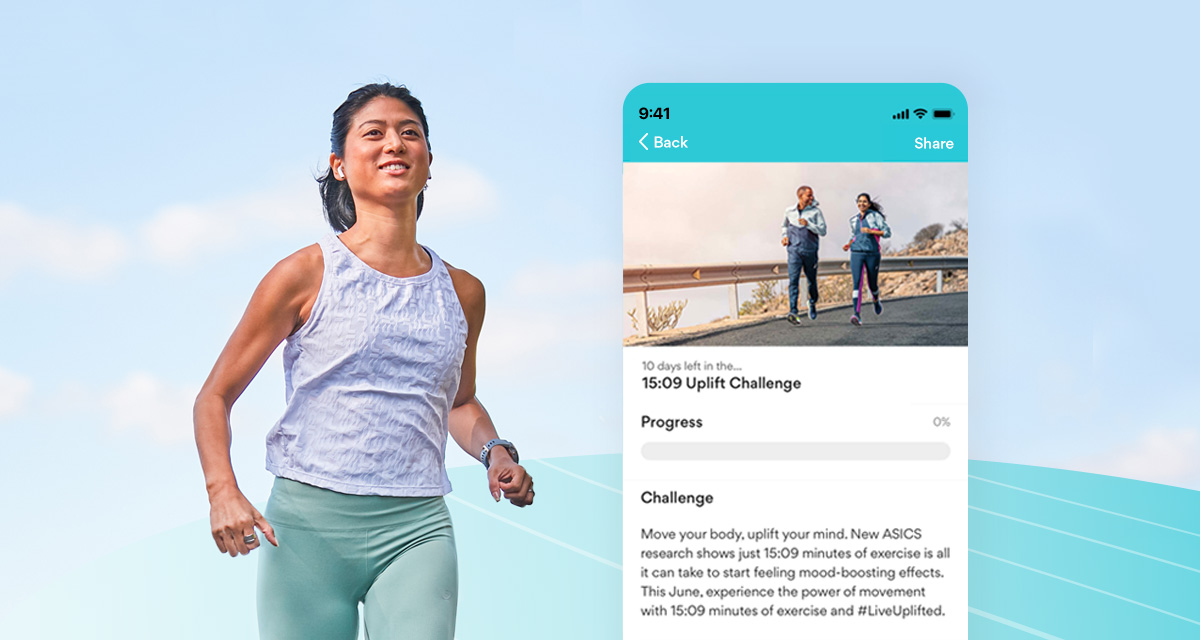Heart rate monitors seem like complicated devices that only advanced runners use, but that perception is far from the truth! Runners of all levels, especially new runners, can benefit from using a heart rate monitor to learn how to assess and control the intensity of a run.
Heart rate monitors come in multiple forms, but the most popular and reliable is the heart rate monitor with the chest strap. (See which ones are compatible with the ASICS Runkeeper app.) If you experience problems with chafing, be sure to use Vaseline or an anti-chafing balm (like Body Glide) where your skin and the strap come into contact. Some watches have a monitor on the back of the watch face that can read the pulse on your wrist. This works best when it’s pressed firmly in place against your skin and you aren’t sweating too heavily.
When are heart rate monitors useful?
A heart rate monitor will do exactly what the name suggests: monitor your heart rate during exercise. When you run, your heart rate increases as your heart works harder to pump oxygen-rich blood to working muscles. Heart rate monitors are also a great way to gauge your efforts while on a run.
Monitor your effort on easy runs
You will get the most benefit from a heart rate monitor when you use it on an easy run. Easy runs are runs done at an intensity low enough that you can talk if you need to. These low-intensity runs offer numerous benefits, including decreased risk of injury, less soreness, increased aerobic fitness, and more enjoyment.
Yet despite being called an easy run, maintaining a low intensity can be anything but easy for runners. Many new runners will start out at a moderate-to-hard effort because that’s the effort that is most often associated with running. But not every run should be hard! Runs done at an easy, comfortable effort are what will build your fitness the most with the least risk of injury.
Find the right zone for training
New runners will benefit the most from heart rate training. Heart rate monitoring will help new runners more precisely and accurately train within the proper zone for each workout, especially easy runs. And since new runners should wait until they build an aerobic base before doing speed work, they can use heart rate monitors to control intensity on all of their runs and learn how to run at the appropriate perceived effort. Finding that just right, easy, comfortable effort is what will build your base fitness the most with the least risk of injury.
Using a heart rate monitor will help you control the intensity and keep your easy runs truly at an ideal intensity. Using a formula (which you can find below), you will have an exact range of numbers for your target heart rate. By making sure you keep your heart rate within this zone, you will keep your run at the appropriate intensity.
When are heart rate monitors less useful?
Heart rate monitoring becomes more complicated and less practical on interval runs. Your heart rate doesn’t instantaneously jump up when you start running faster—it can take up to thirty seconds for your heart to settle into a new rhythm.
Monitor your heart rate for interval workouts
Heart rate monitors may be misleading when you do interval workouts, especially if you are doing shorter intervals. Your heart rate won’t reach the desired zone until partway through or even the end of a hard interval, and then your heart rate may remain elevated throughout the beginning of the recovery interval. If you are using a heart rate monitor during longer intervals, your heart rate will stabilize during the intervals—just know that you will need to give it a few seconds to adjust each time you change your pace. You can wait until your heart rate gets back down to a certain heart rate before starting your next rep, which will help you figure out how long your rest intervals need to be. As you get fitter, this rest interval will become shorter and shorter.
How to understand heart rate zones for running
What’s your maximum heart rate (MHR)? Age, your current fitness, resting heart rate, and other individual factors affect your max heart rate. However, most equations only factor in age, because of how varied the other factors are. There are many formulas out there for maximum heart rate, but research has found that the most accurate equation is 208 – (0.7xage) = MHR. So if you are 27 years old, your MHR is 189 beats per minute (BPM).
Once you know your maximum heart rate, you can determine your target heart rate for different types of workouts.
- Easy runs: 65-75% of MHR (123-142 for our 189 BPM runner)
- Tempo runs: 87-92% (164-173 for 189 BPM runner)
- Intervals: 95-100% (179-189 for 189 BPM runner
What affects heart rate?
Anything that can elevate your resting heart rate will affect your heart rate during exercise. If stress or anxiety causes your heart rate to increase at rest, then your heart rate will be proportionally increased during exercise. Hot weather and humidity can affect your heart rate, as can dehydration and elevation within your route.
With those factors considered, you may find it beneficial to use an additional metric such as perceived exertion when doing heart rate training. Use your heart rate monitor to target the right heart rate zone, but also assess how your breathing and perceived exertion during the run. Your easy run target heart rate should correspond with only slightly elevated breathing and the ability to carry on a conversation.
Whether you are a new runner who hopes to make running a habit or a more experienced runner looking to improve, heart rate monitors can help you achieve your goals. Heart rate monitors can teach you how to control your effort and run at an easy, comfortable pace—and whether you just want to run comfortably for 30 minutes or want to run faster in a race, running within the “just right” intensity will help you achieve those goals and stay injury-free.
Please note: This blog is not intended to be a substitute for professional medical advice, diagnosis, or treatment. Always seek the advice of your physician or other qualified health provider with any questions you may have regarding a medical condition.




